
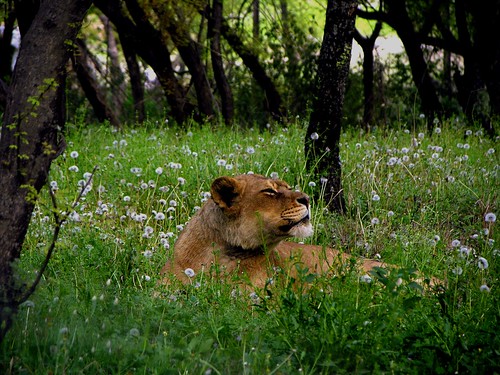
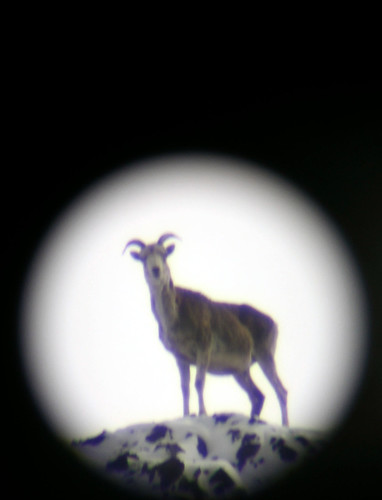
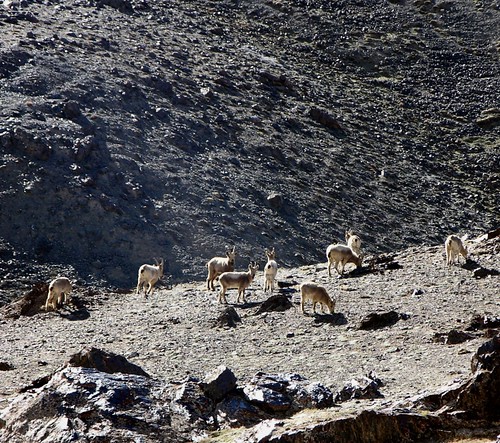
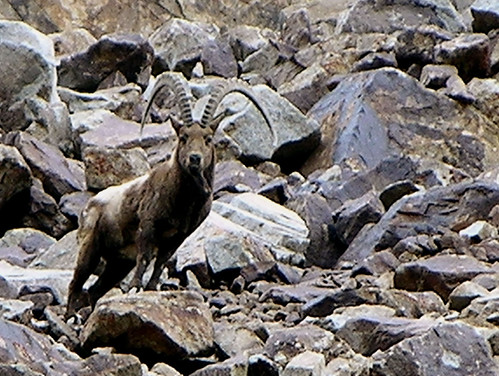


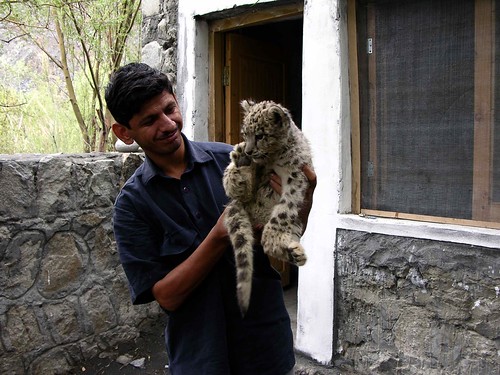
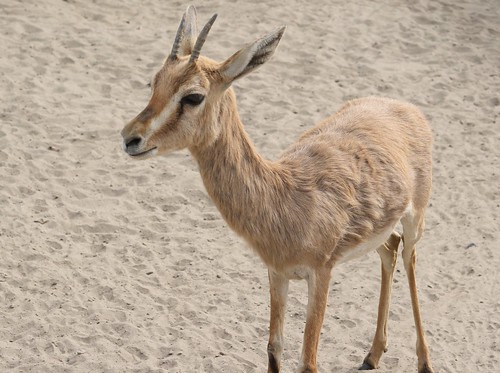
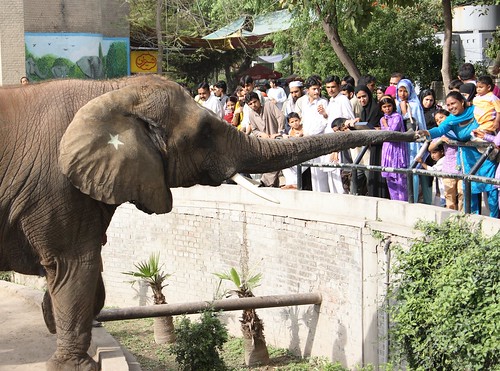



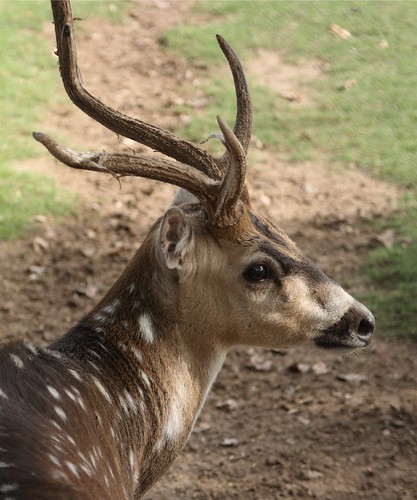
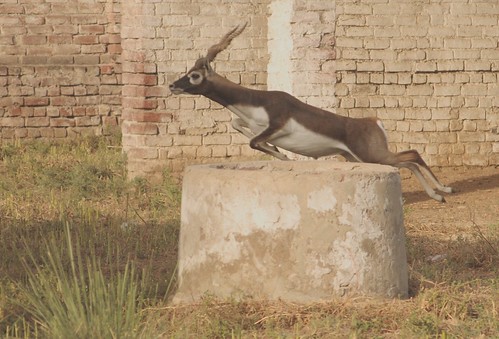
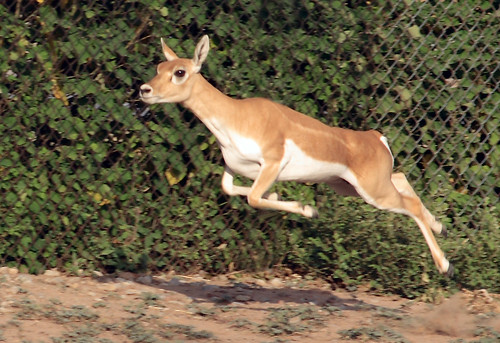

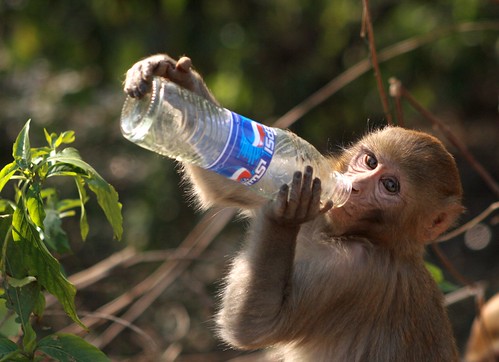
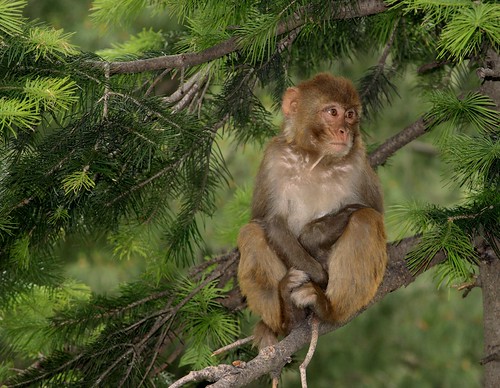
Nature Photography
Slideshow by M. Bukhari
Mamals of Pakistan
1507 views since March 22, 2009.
Get a link button for this slideshow »
Make and share your own slideshow »
1 of 19
Punjab Urial (Ovis vignei punjabiensis)
The Urial is a medium-sized wild sheep and as such is considered a member of the goat antelope subfamily. The Urial is also known as Shapo or Arkhar. Noticeable features are the reddish-brown long fur that will fade during the winter. Males are characterized by a black ruff stretching from the neck to the chest and significantly larger horns.
Urial males have large horns, curling outwards from the top of the head turning in to end somewhere behind the head, females have shorter, compressed horns. The horns of the males may grow to be up 1 metre. The average shoulder height of an adult male Urial lies somewhere between 80 and 90 centimeters.
The Urial is found in the mountain areas of Russia, Pakistan , India and central Asia. The habitat consists of grassy slopes below the timberline. Urials rarely move to the rocky areas of the mountains. The Urial feed mainly on grass but are able to eat leaves of trees and bushes if needed.
The mating season begins in September. During mating the rams (which live in their own herds when not mating) will select 4-5 ewes, who will give birth to one or two lambs after 5 months.
The conservation status of the Urial is threatened as their habitat is perfectly suitable for human development; the Urial population has been recovering the last few years though.
The scientific classification of the Urial is disputed [1], but the Urial can be said to fit into the taxonomic classifications of Ovis vignei, Ovis orientalis and/or Ovis ammon. Subspecies of O. vignei include:
Ovis vignei cycloceros (Afghan or Baluchistan Urial) (Blanford Urial(= blanfordi)
Ovis vignei punjabiensis (Punjab Urial)
Ovis vignei vignei (Ladakh or Shapu Urial)
The above picture is of Punjab Urial Ovis vignei punjabiensis
Photo by NotMicroButSoft (CJ Restored Finally - Congrats)
2 of 19
Jungle Queen
The lion (Panthera leo) is a mammal of the family Felidae and one of four "big cats" in the genus Panthera. The lion is the second largest feline species, after the tiger. The male lion, easily recognized by his mane, weighs between 150?250 kg (330?500 lb). Females range 120?150 kg (260?330 lb).[2] In the wild, lions live for around 10?14 years, while in captivity they can live over 20 years. Though they were once found throughout much of Africa, Asia and Europe, lions presently exist in the wild only in Africa and India. They enjoy hot climates, and hunt in groups.
Scientific classification
Kingdom: Animalia
Phylum: Chordata
Class: Mammalia
Order: Carnivora
Family: Felidae
Genus: Panthera
Species: P. leo
Shot taken at Loi Bhair Wildlife Safari Park near Rawalpindi just one kilometer short of Islamabad International Airport.
There are three lions (2 females and 1 male) in the park. Two of them (one male and one female) are open in a very wide fenced area, and one (female) is in the cage.
Visitors enjoy watching these while seating in their cars. A few days before, one daring kind of person got out of his car to get himself photographed with lion in the background, that one lioness jumped at him, grabbed him from his neck and took him away on a little height. However, in the meantime, the wildlife department's staff managed to get the person released. But he got 108 stiches on his neck.
Photo by NotMicroButSoft (CJ Restored Finally - Congrats)
3 of 19
Once in a blue moon
Is this Marcopolo sheep in Moon?
Marcopolo Sheep is locally known as roosh. Its habitat is restricted to the Khunjrab and Kilik passes. Marco Polo wrote of this sheep six hundred years ago. It stands 115cm at the shoulder and is 156cm from tail to head. This sheep is famous for its very long curving horns, developed in the mature male. The summer coat is short and of a sandy-reddish colour. The face and breast have a mixture of grey and white hairs. The legs and belly are creamy-white. In winter the Marco Polo sheep looks bulkier and slightly greyer with much white about the neck and chest in the old rams.
This sheep can be found at 4500 - 6000m. It avoids steep cliffs and precipitous rocky areas. It is not a permanent resident in Pakistani territory but moves between Chinese-Turkistan and Khunjerab-Kilik passes in Pakistan for fodder and lambing. Hunting has resulted in the disappearance of this sheep from the Khunjerab area while it is still found in Karchanai nallah (Chup-Karchani) of Khunjerab National Park. This is a gregarious species and lives in herds of a dozen to over a hundred individuals, which consist of females with their young, and immature males.
Outside the rutting season mature male rams live in small bands of two to three. Rut starts in late November to early, December, and the lambing season is from May and early June. The gestation period appears to be about 6 months. Single births are common but occasionally twins are born.
This picture was taken in Chap Karchani Valley of Khunjrab National Park, (the core habitat of Marcopolo sheep) by placing the camera close to the lens of a spotting scope. This place is at a distance of two days travel on foot, from Dhee on KKH.
Photo by NotMicroButSoft (CJ Restored Finally - Congrats)
4 of 19
Ibex in Khunjrab National Park
We saw this herd a few km short of Khunjrab top, near Kooz Nallah.
Photo by NotMicroButSoft (CJ Restored Finally - Congrats)
5 of 19
Run Run Run
Siberian Ibex (Capra ibex sibirica)
It is locally known as kil in Shina, giri in Broshaski, skin in Balti and yush in Wakhi. Females are about one third the size of males with an average weight of 50-55 kg, while a male weighs 88 to 90 kg. Older males have a rich chocolate - brown colour in summer, which turns dark in winter.
Females and young males are almost golden in summer with a greyer -brown appe arance in winters .The Siberian ibex can be seen in the upper reaches of most of the valleys in the Northern Areas, up to 4700m elevation. Sometimes it descends during the rut season. Due to indiscriminate hunting and loss of habitat the population of this species has declined, but because of its wide distribution and the inaccessibility of its habitat it still survives in considerable numbers in most of the upper reaches of its habitat. It has an intermediate status and its present population is estimated to be approximately 9-10 thousand in the Northern Areas. Rut season commences towards the third week of December and lasts till mid January. The gestation period is 155 to 170 days. The young are born towards the end of May or early June and twins are common.
Note: I Used maximum of my optical zoom (8 x) and only then got this much closeup. Originally it was a a distance of about 500 meters.
Photo by NotMicroButSoft (CJ Restored Finally - Congrats)
6 of 19
Funny: Isn't It?
Shot taken in Rana Town, near Lahore
Notice the Black Drongo landing on the back of the goat.
Photo by NotMicroButSoft (CJ Restored Finally - Congrats)
7 of 19
A little friend
This is a snow-leopard's cub found in Dhee, Khunjrab National Park are of Northern Pakistan near Pak-China Border. This is an endengerd specie all over the world and need to be given full protection.
Photo by NotMicroButSoft (CJ Restored Finally - Congrats)
8 of 19
Friends - Me and a snow-leopard's cub
The 2 months' little cub was caught by Wildlife department from an adjuscent town of Khunjrab national park.
Photo by NotMicroButSoft (CJ Restored Finally - Congrats)
9 of 19
Chinkara - Indian Gazelle
The Chinkara is a species of gazelle found in South Asia. Found in grasslands and desert areas in India, parts of Iran and Pakistan (Hingol National Park). It is also known as the Indian Gazelle Gazella gazella bennetti
This gazelle stands at 65 centimetres and weighs about 23 kilograms. Its summer coat a warm biscuit, or reddish-buff colour, with smooth, glossy fur. In winter the white belly and throat fur is in greater contrast. The sides of the face have dark chestnut stripes from the corner of the eye to the muzzle bordered by white stripes. The record horns reach over 39 centimetres.
It is a shy animal and avoids human habitation. They have a special characteristic which helps them survive trying times. They can go without water for long periods and can even get sufficient fluids from plants and dew drops. Although mostly seen as solitary animals, they can sometimes be spotted in small groups numbering up to 3 - 4 individuals.
Indian film star Salman Khan was sentenced to a 5 year rigorous imprisonment for shooting several chinkaras and blackbucks, after protests by the Bishnoi community. Encouraged by Mr. Khan's sentence for similar offences by the Jodhpur court, Rajasthan, the Gir Nature Youth Club, Gujarat, a voluntary organisation dedicated to wildlife protection and environment, sought details of the "Chinkara" case against the actor under the Right to Information Act as he has been alleged to have hunted Chinkara in the Indian State of Gujarat, too.
Conservation Status: "Least Concerned"
Scientific classification:
Kingdom:Animalia
Phylum:Chordata
Class:Mammalia
Order:Artiodactyla
Family:Bovidae
Subfamily: Antilopinae
Genus:Gazella
Species: G. bennettii
Binomial name: Gazella bennettii (Sykes, 1831)
en.wikipedia.org/wiki/Chinkara
Photo by NotMicroButSoft (CJ Restored Finally - Congrats)
10 of 19
Allah kay naam pay day day
Photo taken at Lahore Zoo:
This elephant is tamed to receive money as TIP for his care taker, he gets it through his trunk from the visistors (normally children and women), and hands it over to his care taker.
The elephants (Elephantidae) are a family of pachyderm, and the only remaining family in the order Proboscidea in the class Mammalia. Elephantidae has three living species: the African Bush Elephant, the African Forest Elephant (until recently known collectively as the African Elephant), and the Asian Elephant (also known as the Indian Elephant). Other species have become extinct since the last ice age, which ended about 10,000 years ago, the Mammoth being the most famous of these.
Elephants are mammals, and the largest land animals alive today. The elephant's gestation period is 22 months, the longest of any land animal. At birth it is common for an elephant calf to weigh 120 kg (265 lb). An elephant may live as long as 70 years, sometimes longer. The largest elephant ever recorded was shot in Angola in 1956. It was male and weighed about 12,000 kg (26,400 lb),[1] with a shoulder height of 4.2m (13.8 ft), a meter (3 ft 4 in) taller than the average male African elephant.[2] The smallest elephants, about the size of a calf or a large pig, were a prehistoric variant that lived on the island of Crete until 5000 BC, possibly 3000 BC.
Elephants are symbols of wisdom in Asian cultures, and are famed for their exceptional memory and high intelligence, rivalled only by cetaceans and hominids.
Elephants are increasingly threatened by human intrusion. Between 1970 and 1989, the African elephant population plunged from 1.3 million to about 600,000 in 1989; the current population is estimated to be between 400,000 and 660,000.[3] The elephant is now a protected species worldwide, with restrictions in place on capture, domestic use, and trade in products such as ivory. Elephants generally have no natural predators, although a pride of 32 specialized lions in Savuti, Chobe National Park, prey on juvenile and early adult elephants at night
Scientific classification
Kingdom: Animalia
Phylum: Chordata
Subphylum: Vertebrata
Class: Mammalia
Order:Proboscidea
Superfamily: Elephantoidea
Family:Elephantidae Gray, 1821
en.wikipedia.org/wiki/Elephant
Photo by NotMicroButSoft (CJ Restored Finally - Congrats)
11 of 19
Punjab Urial (Ovis vignei punjabiensis)
The Urial is a medium-sized wild sheep and as such is considered a member of the goat antelope subfamily. The Urial is also known as Shapo or Arkhar. Noticeable features are the reddish-brown long fur that will fade during the winter. Males are characterized by a black ruff stretching from the neck to the chest and significantly larger horns.
Urial males have large horns, curling outwards from the top of the head turning in to end somewhere behind the head, females have shorter, compressed horns. The horns of the males may grow to be up 1 metre. The average shoulder height of an adult male Urial lies somewhere between 80 and 90 centimeters.
The Urial is found in the mountain areas of Russia, Pakistan , India and central Asia. The habitat consists of grassy slopes below the timberline. Urials rarely move to the rocky areas of the mountains. The Urial feed mainly on grass but are able to eat leaves of trees and bushes if needed.
The mating season begins in September. During mating the rams (which live in their own herds when not mating) will select 4-5 ewes, who will give birth to one or two lambs after 5 months.
The conservation status of the Urial is threatened as their habitat is perfectly suitable for human development; the Urial population has been recovering the last few years though.
The scientific classification of the Urial is disputed [1], but the Urial can be said to fit into the taxonomic classifications of Ovis vignei, Ovis orientalis and/or Ovis ammon. Subspecies of O. vignei include:
Ovis vignei cycloceros (Afghan or Baluchistan Urial) (Blanford Urial(= blanfordi)
Ovis vignei punjabiensis (Punjab Urial)
Ovis vignei vignei (Ladakh or Shapu Urial)
The above picture is of a female Punjab Urial Ovis vignei punjabiensis
Photo by NotMicroButSoft (CJ Restored Finally - Congrats)
12 of 19
Chordain Gay Na Hum Tera Saath O Saathi Martay Dam Tak
Translation: I shall not leave your company till death.
A Lion and Lioness relaxing at Lahore Zoo
The lion (Panthera leo) is a mammal of the family Felidae and one of four "big cats" in the genus Panthera. The lion is the second largest feline species, after the tiger. The male lion, easily recognized by his mane, weighs between 150?250 kg (330?500 lb). Females range 120?150 kg (260?330 lb).[2] In the wild, lions live for around 10?14 years, while in captivity they can live over 20 years. Though they were once found throughout much of Africa, Asia and Europe, lions presently exist in the wild only in Africa and India. They enjoy hot climates, and hunt in groups.
Scientific classification
Kingdom:Animalia
Phylum:Chordata
Class:Mammalia
Order:Carnivora
Family:Felidae
Genus:Panthera
Species:P. leo
Photo by NotMicroButSoft (CJ Restored Finally - Congrats)
13 of 19
Chital - Spotted Dear - Axis Dear ------ Kis naam say pukaroun -- Kiya naam hay tumhara?
The Name "Chital" comes from a Hindi word for "spotted" and "Deer" comes from the German word "Tier," which simply means "animal."
Description:
The chital (or cheetal) deer Axis axis , also known as the spotted deer or axis deer is an Asiatic deer, belonging to the family Cervidae (order Artiodactyla) and is the most common deer species in Indian forests.
Its coat is reddish fawn, marked with white spots, and its underparts are white. Its antlers, which it sheds annually, are usually three-pronged and curve in a lyre shape and may extend to 75 cm. It has a protracted breeding season due in part to the tropical climate, and births can occur throughout the year. For this reason, males do not have their antler cycles in synchrony and there are some fertile females at all times of the year. Males sporting hard antlers are dominant over those in velvet or those without antlers, irrespective of their size and other factors.
Chital most commonly occur in herds of ten to fifty individuals comprised of one or two stags and a number of females and young. They are often fairly tolerant of approach by humans and vehicles, especially where they are accustomed to human disturbance. They do not occur at higher elevation forests where they are usually replaced by other species such as the Sambar deer.
Distribution:
Wooded Regions of Bangladesh, India and Sri Lanka.
Habitat:
Chital are a tropical or subtropical species with a strong habitat preference for woodland, forests, and clearings near waterways. The presence of permanent water is essential to chital and has a major influence on the extent of their range.
Food:
Chital eat primarily grasses and vegetation, but also eat their shed antlers as a source of nutrients.
Behavior:
This deer often lives in large herds, with many females and two or often three stags. It grazes in the early morning and evening, and rests in cool places during the heat of the day. If an enemy (tiger, leopard, or dhole) approaches, the axis deer flees and often takes refuge in streams or rivers, where it can swim to safety.
An interesting relationship has been observed between herds of chital and troops of Grey Langur (Presbytis entellus) a widespread leaf-eating monkey taxon of South Asia. Chital apparently benefit from the langurs' good eyesight and ability to post a lookout in a treetop, helping to raise the alarm when a predator approaches. For the langurs' part, the chital's superior sense of smell would seem to assist in early predator warning, and it is common to see langurs foraging on the ground in the presence of chital. The chital also benefit from fruits dropped by the langurs from trees such as Terminalia bellerica. Alarm calls of either species can be indicative of the presence of a predator such as a tiger.
Reproduction:
Adult hinds give birth after a gestation of about 234 days. Twins and even triplets are not uncommon. The propensity for multiple births means there is a potential for rapid population growth.
Size and Weight:
A chital stands about 90 cm tall at the shoulder and masses about 85 kg.
Lifespan:
Around 20-30 years.
Conservation Status: "Lease Concerned"
Scientific classification
Kingdom:Animalia
Phylum:Chordata
Class:Mammalia
Order:Artiodactyla
Family:Cervidae
Subfamily:Cervinae
Genus:Axis
Species: A. axis
Binomial name: Axis axis (Erxleben, 1777)
Sources:
en.wikipedia.org/wiki/Chital
www.americazoo.com/goto/index/mammals/365.htm
www.nrw.qld.gov.au/pests/pest_animals/non_declared/deer_c...
www.britannica.com/eb/article-9082211/chital
Photo by NotMicroButSoft (CJ Restored Finally - Congrats)
14 of 19
Chital - Spotted Dear
The Name "Chital" comes from a Hindi word for "spotted" and "Deer" comes from the German word "Tier," which simply means "animal."
Description:
The chital (or cheetal) deer Axis axis , also known as the spotted deer or axis deer is an Asiatic deer, belonging to the family Cervidae (order Artiodactyla) and is the most common deer species in Indian forests.
Its coat is reddish fawn, marked with white spots, and its underparts are white. Its antlers, which it sheds annually, are usually three-pronged and curve in a lyre shape and may extend to 75 cm. It has a protracted breeding season due in part to the tropical climate, and births can occur throughout the year. For this reason, males do not have their antler cycles in synchrony and there are some fertile females at all times of the year. Males sporting hard antlers are dominant over those in velvet or those without antlers, irrespective of their size and other factors.
Chital most commonly occur in herds of ten to fifty individuals comprised of one or two stags and a number of females and young. They are often fairly tolerant of approach by humans and vehicles, especially where they are accustomed to human disturbance. They do not occur at higher elevation forests where they are usually replaced by other species such as the Sambar deer.
Distribution:
Wooded Regions of Bangladesh, India and Sri Lanka.
Habitat:
Chital are a tropical or subtropical species with a strong habitat preference for woodland, forests, and clearings near waterways. The presence of permanent water is essential to chital and has a major influence on the extent of their range.
Food:
Chital eat primarily grasses and vegetation, but also eat their shed antlers as a source of nutrients.
Behavior:
This deer often lives in large herds, with many females and two or often three stags. It grazes in the early morning and evening, and rests in cool places during the heat of the day. If an enemy (tiger, leopard, or dhole) approaches, the axis deer flees and often takes refuge in streams or rivers, where it can swim to safety.
An interesting relationship has been observed between herds of chital and troops of Grey Langur (Presbytis entellus) a widespread leaf-eating monkey taxon of South Asia. Chital apparently benefit from the langurs' good eyesight and ability to post a lookout in a treetop, helping to raise the alarm when a predator approaches. For the langurs' part, the chital's superior sense of smell would seem to assist in early predator warning, and it is common to see langurs foraging on the ground in the presence of chital. The chital also benefit from fruits dropped by the langurs from trees such as Terminalia bellerica. Alarm calls of either species can be indicative of the presence of a predator such as a tiger.
Reproduction:
Adult hinds give birth after a gestation of about 234 days. Twins and even triplets are not uncommon. The propensity for multiple births means there is a potential for rapid population growth.
Size and Weight:
A chital stands about 90 cm tall at the shoulder and masses about 85 kg.
Lifespan:
Around 20-30 years.
Conservation Status: "Lease Concerned"
Scientific classification
Kingdom:Animalia
Phylum:Chordata
Class:Mammalia
Order:Artiodactyla
Family:Cervidae
Subfamily:Cervinae
Genus:Axis
Species: A. axis
Binomial name: Axis axis (Erxleben, 1777)
Sources:
en.wikipedia.org/wiki/Chital
www.americazoo.com/goto/index/mammals/365.htm
www.nrw.qld.gov.au/pests/pest_animals/non_declared/deer_c...
www.britannica.com/eb/article-9082211/chital
Photo by NotMicroButSoft (CJ Restored Finally - Congrats)
15 of 19
Hava K Dosh Pe
Translation: Riding on the Shoulders of Air
Blackbuck (Antilope cervicapra) is a species of antelope found mainly in India, but also in parts of Pakistan and Nepal. There are also introduced populations in various parts of the world including numerous ranches in Texas in the United States of America; free-ranging populations also exist in Argentina (pampas in southern Buenos Aires, Santa Fe and Entre Rí¯³ provinces). Local names for the species include Kala hiran, Sasin, Iralai Maan and Krishna Jinka
Description
The horns of the Blackbuck are ringed with 3 to 4 turns and can be as long as 28 inches. The Adult males can grow as tall as 32 inches and can weigh as much as 95 pounds. The adult male black buck has a blackish brown fur coat with white on its underside and white patches around the eyes. Male black bucks have long and spiral horns that can grow to be nearly two feet long. The females are beige in color and do not have horns. A fully-grown male black buck stands 32 inches at the shoulder and can weigh up to 88 pounds. Blackbucks usually roam the plains in herds of 15 to 20 animals with one dominant male. It is considered one of the fastest animals on Earth, reaching speeds up to 50 miles per hour! It can outrun most predators over long distances.
There are four subspecies or geographic races:
?Antilope cervicapra cervicapra
?Antilope cervicapra rajputanae
?Antilope cervicapra centralis
?Antilope cervicapra rupicapra
Habitat
Its original habitat is open plain and not dense jungles. Male black bucks are territorial, but do occasionally venture to the surrounding terrain. Females do not establish any territory of their own.
Food:
The diet of the Blackbuck consists mostly of grasses, although it does eat pods, flowers and fruits to supplement its diet.
Life Span:
The maximum life span recorded is 16 years and the average is 12 years.
Social Behaviours:
Black bucks are usually found in herds, but during mating season one male establishes dominance. Males exhibit rutting (mating) behavior all year. This behavior includes fighting and sparring between males, sometimes for fun, but usually to demonstrate dominance. The animals' spiral horns lock together as they collide, but they rarely get hurt.
Conservation Status: Not Threatened
Potential Threats:
One of the major threats to this creature is habitat destruction. The natural habitat of the Blackbuck is being encroached upon by man's need for arable land and grazing ground for domesticated cattle. Exposure to domesticated cattle also renders the Blackbuck exposed to bovine diseases.
The other main threats to the species are
?Poaching
?Predation
?Inbreeding
?Visitors
Mythology:
According to the Hindu mythology Blackbuck or Krishna Jinka is considered as the vehicle (vahana) of the Moon-god or Chandrama.
Miscellaneous:
The blackbuck, known as Krishna Jinka in Telugu language, has been declared the state animal of Andhra Pradesh.
Like most wild animals, the black buck is in principle protected in India by the Wildlife Protection Act of 1972. Its protected status has gained publicity through a widely reported court case in which one of India's leading film stars, Mr. Salman Khan, was sentenced to five years imprisonment for killing two black bucks and several endangered chinkaras. The arrest was prompted by intense protests from the Bishnoi ethnic group, which holds animals and trees sacred, and on whose land the hunting had taken place.
Wildlife Sanctuaries having Blackbuck:
?Blackbuck National Park, Velavadar
?Bandhavgarh National Park
?Kanha National Park
?Ranthambhore National Park
?Corbett National Park
?Bharatpur Bird Sanctuary
?Gir National Park
?Guindy National Park
?Kirthar National Park (Pakistan)
?Lal Sohanra National parks (Pakistan)
?Chhapar, Churu, Black Buck Santuary
Scientific Classification:
Kingdom:Animalia
Phylum:Chordata
Class:Mammalia
Order:Artiodactyla
Family:Bovidae
Subfamily:Antilopinae
Genus:Antilope (Pallas, 1766)
Species:A. cervicapra
Binomial name: Antilope cervicapra (Linnaeus, 1758)
Source:
www.worldwildlife.org/expeditions/teraiarc/wl_buck.html
en.wikipedia.org/wiki/Blackbuck
Shot Taken at: Jallo Wildlife Safari Park, Lahore
Photo by NotMicroButSoft (CJ Restored Finally - Congrats)
16 of 19
Black buck in action
Black buck in zoological garden of Islamabad near Faisal Mosque.
for more information see:
www.flickr.com/photos/mbukhari/480873951/in/set-721576000...
Lens used: Canon EF 28-105 mm
Photo by NotMicroButSoft (CJ Restored Finally - Congrats)
17 of 19
Tempest
This name was given to this Jungle queen by my niece, Tehniat who visited Loi Bhair Wildlife Safari Park Rawalpindi/islamabad last day.
For more information on this see:
www.flickr.com/photos/mbukhari/448064300/in/set-721576000...
Photo by NotMicroButSoft (CJ Restored Finally - Congrats)
18 of 19
Yeh Dil Mangay More
Shot at Margala - on the Way to Daman-e-Koh.
Photo by NotMicroButSoft (CJ Restored Finally - Congrats)
19 of 19
Monkey Business
A shot from one of my shoots I did for booklet of a Zoo.
Shot taken near Ayubia - Galiyat, NWFP.
Photo by NotMicroButSoft (CJ Restored Finally - Congrats)

